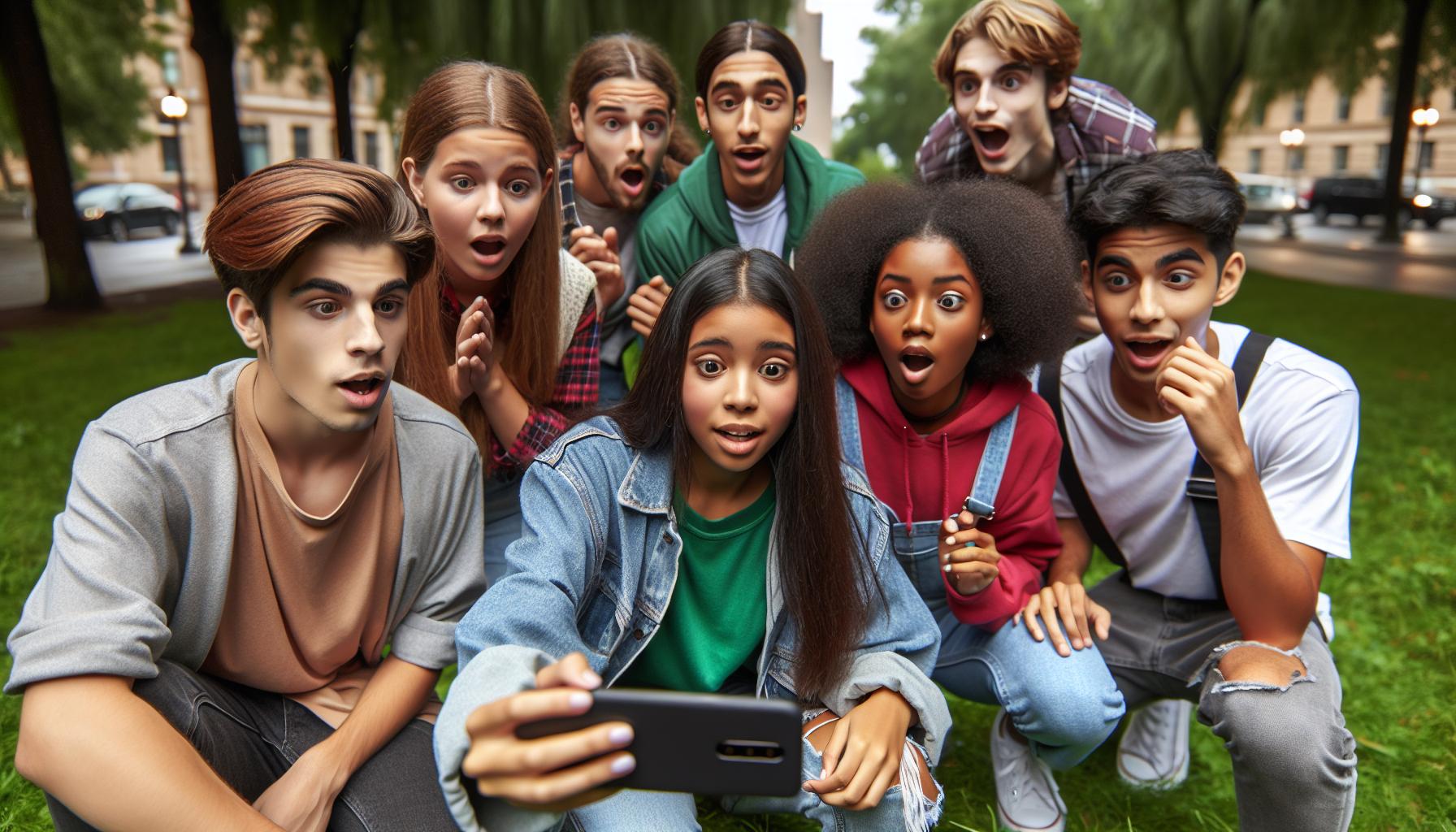Social media can feel like a double-edged sword. On one hand, it connects people and sparks creativity. On the other, it breeds bizarre trends that might make anyone question humanity’s sanity. From outrageous challenges to toxic comparisons, some trends are downright harmful, leaving a trail of chaos in their wake.
Harmful Social Media Trends
Social media serves as a platform where harmful trends often emerge. Outrageous challenges circulate rapidly, enticing users to engage in dangerous activities. These challenges, promoted by influencers or viral videos, frequently attract participation without consideration for personal safety.
Toxic comparisons also dominate social media discourse. Individuals frequently measure their worth against fabricated portrayals of others’ lives, leading to feelings of inadequacy and lowering self-esteem. This culture creates an environment where superficial standards become benchmarks for success.
In addition to these, misinformation spreads easily across social networks. False claims and sensational headlines capture attention, making it hard for users to distinguish fact from fiction. This often results in misguided beliefs and can incite panic or harmful behaviors.
Moreover, cyberbullying has become a pervasive issue. Anonymity emboldens individuals to harass others, leading to severe emotional distress. Reports indicate that 34% of students have experienced cyberbullying, amplifying the need for proactive measures.
Lastly, unrealistic beauty standards proliferate through edited images and filters. Users, particularly young women, often feel pressured to conform to these ideals. Such exposure can contribute to body image issues and unhealthy eating habits.
Tracking these trends highlights the significant impact social media has on mental health and societal norms. Awareness can aid in combating these dangerous dynamics and fostering a healthier online environment.
Impact On Mental Health

Social media trends significantly affect mental well-being. The allure of likes and shares often creates a pressure-filled environment, impacting individuals deeply.
Anxiety And Depression
Engagement in harmful social media trends can escalate anxiety and depression. Increased exposure to negative content fosters feelings of helplessness. Individuals frequently internalize toxic comparisons, believing they don’t measure up. Studies show social media use correlates with higher rates of anxiety. Those constantly striving for validation may find themselves in a vicious cycle, feeling inadequate without online approval. A 2021 survey noted that 45% of users feel anxious when not connected. These trends foster emotional states that deter long-term happiness and fulfillment.
Self-Esteem Issues
Social media can undermine self-esteem effectively. Many users compare their lives to idealized portrayals, which leads to unhealthy self-assessment. Edited images and curated posts distort reality, creating unattainable standards. A report from the American Psychological Association found that 58% of teens experience negative body image due to social media. This dissatisfaction often translates into harmful behaviors, such as eating disorders. Finding self-worth through likes diminishes individual value, making genuine self-acceptance challenging. These issues highlight the pressing need for awareness and intervention regarding social media’s impacts.
Influence On Behavior

Social media significantly influences individual behavior, often magnifying harmful trends. Many issues arise, notably cyberbullying and risky challenges, impacting users’ mental health and overall well-being.
Cyberbullying
Cyberbullying poses a serious threat, particularly among adolescents. Users face harassment through anonymity, leading to emotional distress for victims. Studies highlight that nearly 37% of students experience bullying online, causing anxiety and depression. Victims often suffer from low self-esteem and feelings of isolation. An increase in mental health issues correlates with the rise of cyberbullying on social platforms. Efforts to combat this trend include awareness campaigns and support resources aimed at fostering a safer online environment.
Risky Challenges
Risky challenges emerge frequently on social media, enticing users to participate without evaluating the potential dangers. These challenges often circulate rapidly, encouraging dangerous activities like daredevil stunts or substance use. Statistics reveal that 29% of adolescents report engaging in risky challenges, often spurred by influencer endorsements. The thrill associated with these challenges leads to impulsive decisions, increasing the likelihood of accidents or injuries. Awareness about the consequences of such trends can promote safer choices and discourage participation in these harmful activities.
Role Of Social Media Platforms

Social media platforms significantly shape user behavior and trends, often influencing harmful patterns among their users.
Algorithmic Amplification
Algorithmic amplification accelerates the spread of harmful trends. Platforms prioritize engaging content, causing shocking challenges to receive more visibility. Algorithms promote sensationalized posts, leading to a surge in participation among users. This amplification can encourage risky behavior as influencers share outrageous activities with their followers. Research indicates that 70% of users engage in trends they discover through algorithm-driven feeds. Visibility of these trends increases the chances of users attempting them, further perpetuating the cycle of danger. Consequently, the designs of these algorithms play a crucial role in determining what users see, often highlighting detrimental content instead of promoting safety and wellbeing.
Responsibility And Regulation
Responsibility lies with social media companies to mitigate the impact of harmful social media trends. These platforms must implement stricter guidelines to identify and limit dangerous content. Regulatory measures can involve content moderation and clearer labeling for risky challenges. The need for accountability increases, as studies show that 61% of users believe platforms should take action against harmful trends. Implementing these changes requires a commitment to user safety and mental health. Regulations can also involve collaboration with mental health organizations to raise awareness and educate users about risks. By establishing proactive approaches, social media platforms can promote healthier environments and protect users from the adverse effects of harmful trends.
Case Studies Of Harmful Trends
Social media trends can lead to dangerous behaviors. Several specific challenges highlight the perils associated with these trends.
The Tide Pod Challenge
The Tide Pod Challenge gained notoriety as participants ingested laundry detergent pods for social media views. Many adolescents engaged in this alarming trend, believing it led to viral fame. According to reports, individuals consuming these pods experienced severe health consequences, including vomiting and respiratory distress. Emergency rooms reported a significant increase in cases linked to this challenge, highlighting its dangerous nature. The Consumer Product Safety Commission stated that over 10,000 calls related to Tide Pod consumption were made to poison control centers in 2018 alone. As a result, parents and educators rallied together, advocating for awareness and prevention strategies to protect younger audiences from similar challenges.
The Momo Challenge
The Momo Challenge emerged as a sinister phenomenon affecting children across various platforms. This trend supposedly involved a frightening character that prompted participants to engage in harmful acts. Reports indicated that children felt significant fear while interacting with the challenge, leading to distress and anxiety. According to a survey by the National Society for the Prevention of Cruelty to Children, 18% of children reported being aware of Momo in 2019. The challenge sparked widespread concern among parents and guardians about online safety. Social media platforms faced scrutiny for not adequately policing such harmful content, prompting calls for stricter regulations and enhanced protective measures for young users.
Social media’s impact
Social media’s impact on society is profound and complex. While it offers opportunities for connection and creativity, the rise of harmful trends poses significant risks. The dangers of outrageous challenges and toxic comparisons can lead to serious mental health issues and unsafe behaviors.
Addressing these challenges requires collective action from users, influencers, and social media platforms. Increased awareness and accountability are essential to mitigate the negative effects and foster a healthier online environment. By promoting responsible use and supporting mental health initiatives, society can work toward safeguarding individuals from the pitfalls of harmful social media trends.


